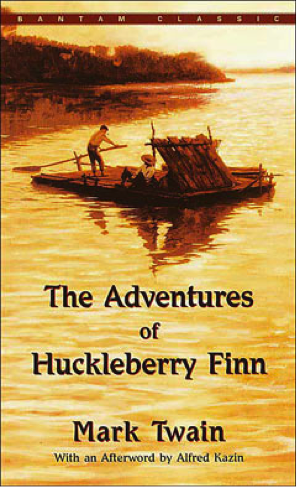 Two afternoons a week, I tutor a high school
junior in English and history and enjoy gleaning insights into a different
school community than the one in which I work. My client Mary attends a school with
a predominantly white and wealthy student population. I work mainly with students
of color from families who live in poverty.
Two afternoons a week, I tutor a high school
junior in English and history and enjoy gleaning insights into a different
school community than the one in which I work. My client Mary attends a school with
a predominantly white and wealthy student population. I work mainly with students
of color from families who live in poverty.
Mary’s latest English assignment is to write a letter to the school board on whether The Adventures of Huck Finn should be required reading for juniors. Mary argues, “yes.” I ask her why.
“Our school is very white and we don’t have much of a chance to see what racism is like,” she states.
Oh really? This is the same school that was in the news because of the racially-based harassment of a black football player by white students. Mary also told me that she frequently hears the n-word exchanged between students in the hallways.
“What do you mean it gives you a chance to see what racism is like?” I ask, wanting her to offer a clearer picture of her perceptions.
“Since we’re mainly white at our school, we just don’t see what it’s like for black people,” Mary clarified. “We don’t see racism.”
I should mention that Mary’s family is Iranian and lives in a community that has not been friendly to people of Middle-Eastern descent post-9/11.
“So,” I venture, “is racism only between whites and blacks?”
“Well, no. But that’s what I think of when I think of racism,” she said.
I’m reminded of a recent argument with a family acquaintance. He implied that there was no longer racism in the United States because President Barack Obama had been re-elected. I argued that as a white, middle-aged male, he might view the world through a different lens than did a person of color. Just because he doesn’t see racism, doesn’t mean it no longer exists.
Too often we talk about racism when we need to talk about equity. If our high school students view Huck Finn as an exemplar of contemporary racism, we are doing more damage than good.
I asked Mary if her class talked about their personal experiences with racism or about the everyday micro-aggressions experienced by people of color in our society. Did they discuss the persistent racial achievement gap in schools? “Nope,” she said.
Huck Finn can be a powerful tool for prompting discussion about racism in the United States, past and present. It is, however, an extremely complex work to teach and should be done so critically and sensitively.
We have a responsibility to our students to have honest dialogue about race, privilege and institutional racism so that they can articulately speak out against it. We can no longer afford to create citizens who don’t see racism.
Ryan Fear is a high school dean of students in Oregon.